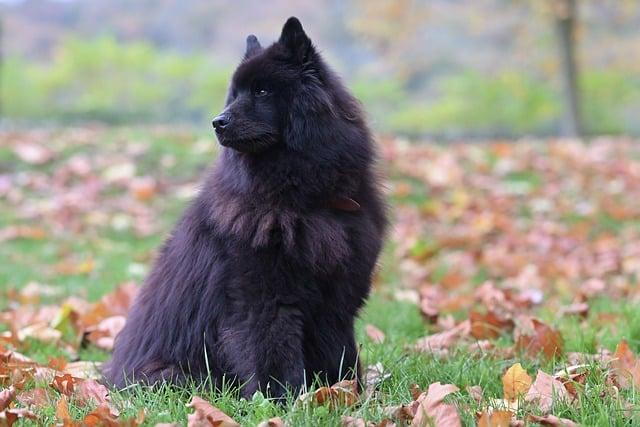Every morning, as the sun peeks through the curtains, Max, a spirited golden retriever, bursts into action, racing around the house like a whirlwind. His owner, Sarah, often wonders, “Why is my dog so hyper and crazy?” The answer lies in his boundless energy and natural instincts. Dogs like Max thrive on exercise, mental stimulation, and social interaction. By understanding his needs and providing structured playtime, Sarah can transform that wild energy into joyful companionship. Embrace the chaos; it’s a sign of a happy, healthy dog!
Contents
- Understanding the Root Causes of Hyperactivity in Dogs
- The Impact of Breed Characteristics on Energy Levels
- Effective Training Techniques to Manage Excessive Energy
- Creating a Balanced Routine for a Calm and Happy Dog
- Q&A
Understanding the Root Causes of Hyperactivity in Dogs
Hyperactivity in dogs can often be traced back to a variety of underlying factors that influence their behavior. Understanding these root causes is essential for pet owners seeking to manage their dog’s energy levels effectively. One significant contributor is genetics; certain breeds are predisposed to higher energy levels and more exuberant behavior. For instance, working breeds like Border Collies and Australian Shepherds are naturally more active due to their history of herding and labor-intensive tasks.
Another critical factor is environmental stimulation. Dogs that are not adequately stimulated mentally and physically may exhibit hyperactive behavior as a means of coping with boredom. Lack of exercise, insufficient playtime, and minimal interaction with their owners can lead to pent-up energy, resulting in frantic behavior. Regular walks, interactive toys, and engaging training sessions can help mitigate this issue, providing the necessary outlets for their energy.
Additionally, dietary influences can play a role in a dog’s hyperactivity. High-sugar or high-carb diets may lead to spikes in energy levels, causing dogs to become overly excited or restless. It’s crucial to evaluate your dog’s diet and consider switching to a balanced, high-quality dog food that supports stable energy levels. Consulting with a veterinarian can provide insights into the best dietary choices for your pet’s specific needs.
Lastly, behavioral issues stemming from anxiety or stress can manifest as hyperactivity. Dogs may become overly energetic when they are anxious, fearful, or not properly socialized. Identifying triggers and providing a safe, calm environment can help alleviate these behaviors. Training techniques, such as positive reinforcement and desensitization, can also be effective in addressing anxiety-related hyperactivity, allowing your dog to feel more secure and relaxed.
The Impact of Breed Characteristics on Energy Levels
Understanding your dog’s energy levels often begins with recognizing the inherent traits of their breed. Different breeds have been selectively bred for specific purposes, which can significantly influence their behavior and activity levels. For instance, working breeds like Border Collies and German Shepherds are known for their high energy and need for mental stimulation. These dogs thrive on tasks and challenges, making them more prone to hyperactivity if their needs aren’t met.
On the other hand, toy breeds such as Chihuahuas and Pomeranians may exhibit bursts of energy but generally require less exercise compared to larger breeds. Their smaller size often leads to a different type of playfulness, which can sometimes be mistaken for hyperactivity. Understanding these breed-specific traits can help you tailor your approach to managing your dog’s energy levels effectively.
Moreover, some breeds are naturally more excitable than others. Breeds like Jack Russell Terriers and Beagles are known for their playful and sometimes frenetic behavior. This can be attributed to their hunting backgrounds, where high energy and quick reflexes were essential for chasing prey. Recognizing these characteristics allows you to implement strategies that channel their energy positively, such as engaging in interactive play or providing agility training.
Lastly, it’s essential to consider that individual dogs may vary significantly even within the same breed. Factors such as age, health, and environment play crucial roles in shaping a dog’s energy levels. By observing your dog’s unique personality and needs, you can create a tailored routine that accommodates their breed characteristics while promoting a balanced lifestyle. This proactive approach not only helps in managing hyperactivity but also enhances the overall well-being of your furry friend.
Effective Training Techniques to Manage Excessive Energy
Managing a dog with excessive energy requires a thoughtful approach to training that not only channels their enthusiasm but also strengthens your bond. **Positive reinforcement** is one of the most effective techniques. Rewarding your dog with treats, praise, or playtime when they exhibit calm behavior encourages them to repeat those actions. This method not only helps in reducing hyperactivity but also builds trust and confidence in your dog.
Incorporating **structured playtime** into your dog’s routine can significantly help in managing their energy levels. Activities such as fetch, tug-of-war, or agility training provide both physical and mental stimulation. Consider setting aside specific times each day for these activities, ensuring your dog knows when to expect them. This predictability can help reduce anxiety and hyperactivity, as your dog learns to channel their energy into productive play.
Another effective strategy is to implement **obedience training sessions**. Teaching your dog basic commands like sit, stay, and down not only reinforces good behavior but also provides mental stimulation. Short, frequent training sessions can keep your dog engaged and focused, helping to curb their hyperactive tendencies. Remember to keep these sessions fun and rewarding to maintain your dog’s interest and enthusiasm.
Lastly, consider introducing **interactive toys** that challenge your dog mentally. Puzzle toys, treat-dispensing balls, and other engaging gadgets can keep your dog occupied and stimulate their mind. This mental engagement is crucial for high-energy dogs, as it can tire them out just as effectively as physical exercise. By combining these techniques, you can create a comprehensive training plan that effectively manages your dog’s energy levels while promoting a harmonious living environment.
Creating a Balanced Routine for a Calm and Happy Dog
To ensure your dog remains calm and happy, establishing a balanced routine is essential. Dogs thrive on structure, and a consistent daily schedule can significantly reduce hyperactivity. Start by setting specific times for walks, meals, and playtime. This predictability helps your dog understand what to expect throughout the day, leading to a more relaxed demeanor.
Incorporating a variety of activities into your dog’s routine is crucial. Aim for a mix of physical exercise, mental stimulation, and relaxation periods. Consider the following activities:
- Daily walks: Aim for at least 30 minutes of brisk walking to expend energy.
- Interactive play: Engage in games like fetch or tug-of-war to keep your dog active.
- Training sessions: Short, positive reinforcement training can stimulate your dog’s mind.
- Calm time: Designate quiet moments for your dog to relax, such as lying on a comfortable bed.
Socialization is another key component of a balanced routine. Regular interactions with other dogs and people can help your dog learn appropriate behaviors and reduce anxiety. Schedule playdates or visit dog parks to provide opportunities for your dog to socialize in a controlled environment. This exposure can help them feel more secure and less prone to hyperactive behavior.
Lastly, consider incorporating calming techniques into your dog’s daily life. Activities such as gentle massage, soothing music, or even aromatherapy can promote relaxation. Additionally, providing a safe space where your dog can retreat when feeling overwhelmed can make a significant difference. By creating a well-rounded routine that includes physical, mental, and emotional elements, you can help your dog achieve a state of calmness and happiness.
Q&A
-
What causes my dog to be hyperactive?
Hyperactivity in dogs can stem from various factors, including:
- Genetics: Some breeds are naturally more energetic.
- Lack of exercise: Insufficient physical activity can lead to pent-up energy.
- Diet: High-sugar or low-quality food can contribute to hyper behavior.
- Environment: A stimulating environment may overwhelm your dog.
-
How can I help my dog calm down?
To manage your dog’s hyperactivity, consider the following strategies:
- Regular exercise: Engage in daily walks, runs, or play sessions.
- Structured routine: Establish a consistent schedule for feeding, exercise, and rest.
- Mental stimulation: Use puzzle toys or training exercises to challenge your dog’s mind.
- Calm environment: Create a serene space for your dog to relax and unwind.
-
Is my dog’s hyperactivity a sign of a behavioral issue?
While hyperactivity can be normal, it may also indicate underlying behavioral issues such as:
- Anxiety: Stressful situations can lead to excessive energy.
- Attention-seeking: Dogs may act out to gain your attention.
- Insufficient training: Lack of obedience training can result in unruly behavior.
-
When should I consult a veterinarian?
If your dog’s hyperactivity is extreme or accompanied by other concerning behaviors, it’s wise to consult a veterinarian. Signs to watch for include:
- Sudden changes in behavior: A shift in energy levels or temperament.
- Destructive behavior: Chewing or digging excessively.
- Inability to settle: Constant pacing or inability to relax.
understanding your dog’s hyperactivity is key to fostering a harmonious relationship. By addressing their needs through exercise, mental stimulation, and proper training, you can transform that boundless energy into positive behavior. Embrace the journey!

大家好,我是彼得潘,專業的手法身體治療師。我喜歡探索和研究各種主題,並透過與人工智慧的合作分享專業、實用、有趣的文章。我們定期進行人工審核,以確保內容的準確性。如果您發現文章中有任何不準確的地方,請隨時與我們聯繫,我們會及時糾正。您可以透過 [email protected] 與我們聯繫。



